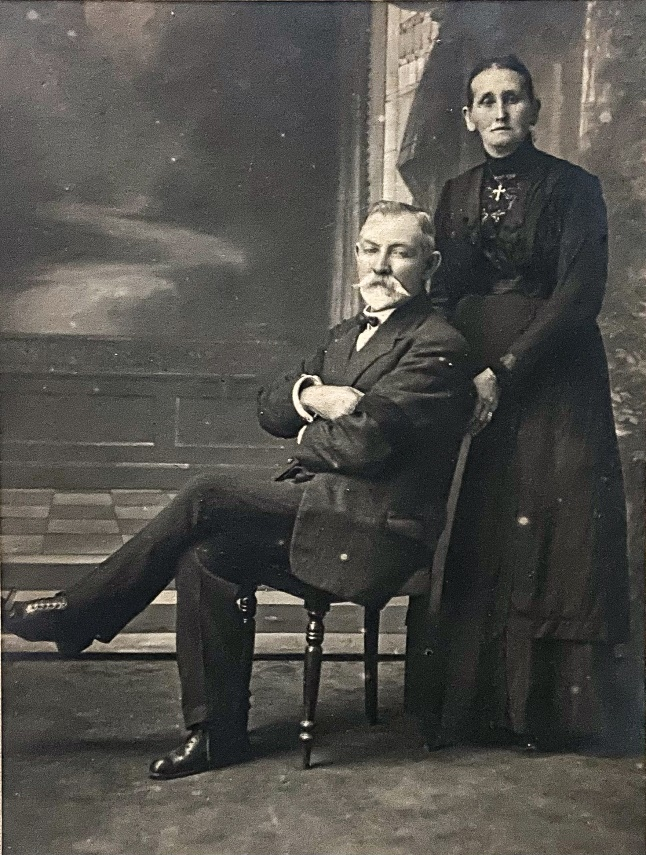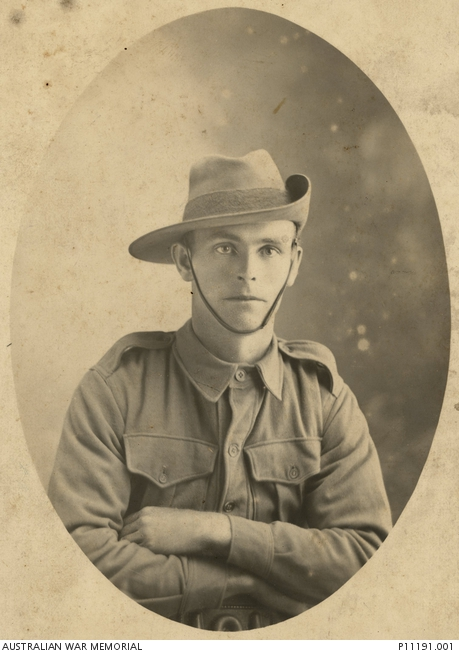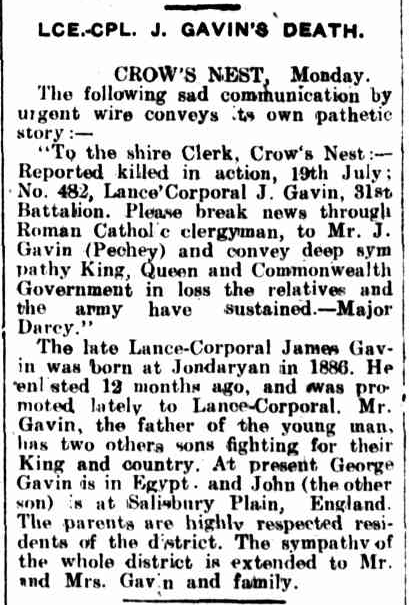James GAVIN
Eyes grey, Hair dark, Complexion dark
The Gavin Family
The Gavin family descended from Irish immigrants, Denis and Ellen Gavin, who escaped the famine arriving from Dublin in December 1855 to begin a new life in Dalby. Denis and Ellen’s Australian born son, James, would grow up to marry Mary Drift and have ten children at their farm at Pechey on the Crow’s Nest rail line near Toowoomba, Queensland.
- Denis John 1884-1937
- James 1886-1916
- Ellen 1887-1961
- George 1890-1890
- John Joseph 1892-1956
- William 1894-1952
- Alicia Mary 1896-1986
- George Michael 1897-1981
- Patrick Joseph 1899-1971
- Stephen 1901-1949
James (Senior) was a farmer but also a lengthsman for nearly thirty years with Queensland Rail while Mary was a mother, gatekeeper for the railway and worked at Pechey State School. Their children would have several years together enjoying the peace and freedom of Australia before war came to their door in 1914.
Seven Sons in service of the King – Five went to War
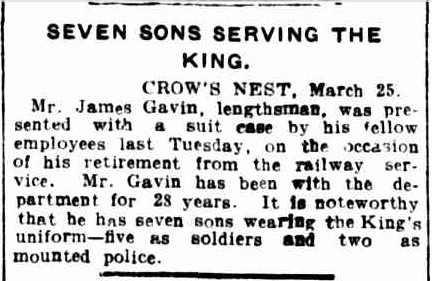
With the outbreak of war, the Gavin family already had two sons serving as mounted police – the eldest, Denis, joined in 1911 while William joined in March 1914.
The five remaining sons answered the nation’s recruitment call within about an eighteen-month period. Three of the boys lied about their age claiming to be over 18 years.
- 9 July 1915 – 29-year-old James (Jim) (482) enlisted joining the 31st Battalion
- 6 August 1915 – 17-year-old George (1566) enlisted in the 5th Light Horse Regiment
- 27 January 1916 – 23-year-old John (Jack) (2341) enlisted joining 5th Light Horse Regiment
- 17 February 1917 – 17-year-old Patrick Joseph (Joe) (3261) enlisted in 5th Light Horse Regiment
- 19 February 1917 – 15-year-old Stephen (3262) on his second attempt joined the 5th Light Horse Regiment.
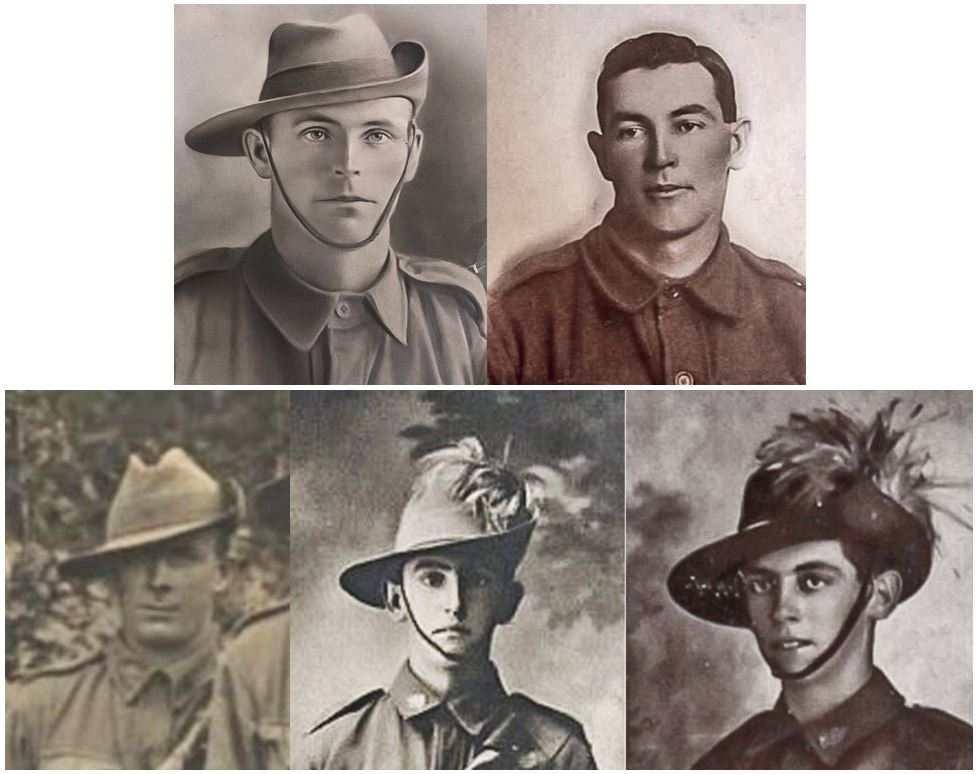
James Gavin’s War
The Gavin’s second eldest son James (Junior) – known as Jim – was the first of the Gavin brothers to enlist, signing up on the 9th July 1915 with the 31st Battalion B Company at the age of 29. Jim was a good-looking station-hand, five feet eleven tall, single and willing to fight for his country.
Jim underwent training at the Enoggera camp in Brisbane before embarking on the HMAT Wandilla arriving in Suez on 7th December 1915. During his training in Egypt, Jim was promoted to Lance Corporal.
In June 1916, the 31st Battalion embarked on HMT Hororata to join the British Expeditionary Force in France. The newly trained and enthusiastic troops disembarked and proceeded to the nursery section of the Somme where the battle had begun on 1st July 1916.
Jim had now been a member of the AIF for a year and after his training and travels was at last a soldier, a leader and ready to take the fight to the front! An adventure and a promise it would be all be over by Christmas made the troops even more anxious to be in the thick of battle.
The 31st Battalion was one of the twelve battalions of raw recruits of the untried Fifth Division of the AIF. They were based near Armentieres acclimatising in the ‘nursery sector’ to gain trench experience before battle. Little did they know that in less than three weeks 5532 Australians would be wounded or killed.
Jim was waiting with his company that morning of the 19th July, but his battle would be short and brutal and by morning he and scores of his mates would be dead. The barrage of fire would blow up an ammunition tent and in the horror of battle his body was taken to Eaton’s Hall dressing station. Jim was buried in the nearby cemetery, later renamed Rue Petillon Military Cemetery, at Fleurbaix. The official description of his place of burial was “near Rue Petillon, two and a half miles East of Laventie, four and a half miles South, South-West of Armentieres”. The military authorities, both English and German, showed great respect in burying and honouring the dead when they could.
News sent home
Jim’s parents were advised of his death by cable about 9 August 1916 stating that he was killed in action in France. Families at home would hear of Armentieres and even tell people their sons were killed at the more recognizable Gallipoli as the town of Fromelles, even today, is not mentioned on some memorials.
As noted in the news report of his death, Jim’s younger brothers George and Jack had also enlisted and were in action overseas. George had enlisted and left Australia only weeks behind his brother; he was with the 5th Light Horse regiment in Egypt and later in Palestine. Jack enlisted in January 1916 while his brothers were settling in to training in Egypt. He was initially with the 5th Light Horse but was later transferred to the 2nd Light Horse regiment.
Despite the loss of their older brother, Jim’s two youngest brothers were keen to enlist, both lying about their age to do their bit.
Stephen and Joe Gavin enlisted together (with two of their Kunkel cousins), and had consecutive regimental numbers. The youngest, Stephen, had attempted to enlist in January 1917 (aged just fifteen and half) but was sent home after his father James senior asked the headmaster at Pechey State School to write a letter to Enoggera Barracks to send Stephen home to help run the farm. The headmaster wrote:
“Three of his sons are over at the Front now, one being killed last year. This is the only boy left to help him at home so it is only just for him to stay with his aged parents. Mr Gavin would deem it a favour if you would demobilise him and send him home at once.”

Despite this, just weeks later Stephen enlisted yet again with his brother, Joe. Both boys were under 18. The elder brother, Patrick Joseph “Joe”, was still at school and an academic at 17 and Stephen still fifteen and a half. Both youngsters joined the 5th Light Horse as their two elder brothers had done, but in different reinforcement groups - George in the 12th, Jack the 16th and Joe and Stephen in the 26th.
We can only imagine the emotions of this ordinary country family with one son buried in France, four sons (and numerous cousins) fighting overseas, two sons in the Queensland Police and two daughters at home.
Mary and James Gavin Sr. eventually had their four younger sons returned to them in 1919 - but they were not the wide-eyed adventurous boys who returned. Only Jack and Stephen would marry while only Stephen had a child - a son named James, of course.
Mary, their mother, searched for answers as to the how and why of Jim’s death. The Toowoomba Chronicle (4 April 1925) tells of the wedding of the eldest daughter, Ellen, on 25th February 1925 to Lesley Chaffey (who also served during WW1) stating that Mrs Gavin:
“received the guests in a gown of black crepe de chine relieved in grey georgette and richly beaded in black. With this was worn a smart black hat.”
Never would she be seen again out of her mourning clothes of black for her lost son.
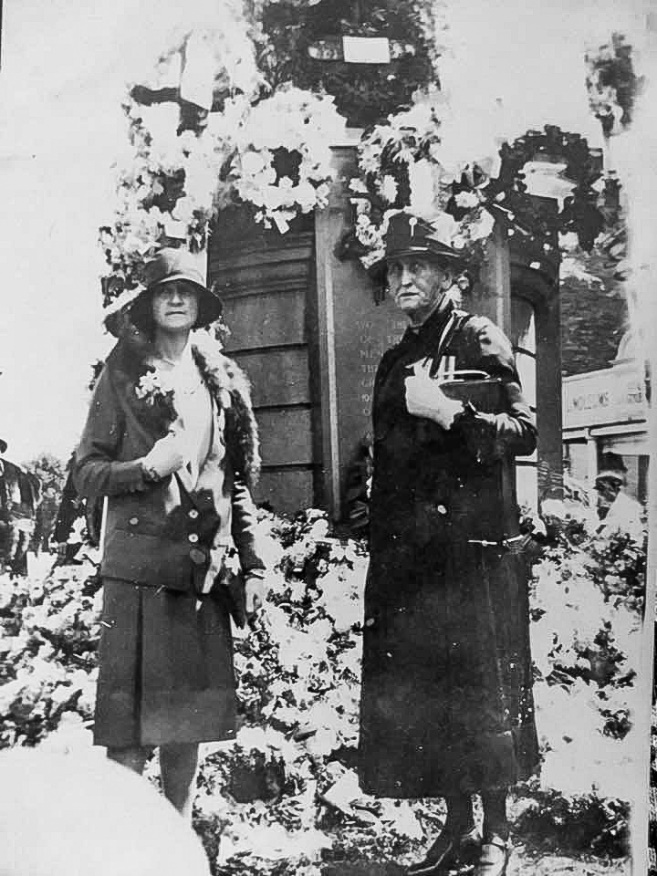
The years of war led Mary and James to move to Argyle Street, Toowoomba as they were too old to run a farm with five sons fighting overseas. Mary sent many letters seeking her sacrificed son’s medals and also personal effects right up until her tragic death in a car accident in 1930.
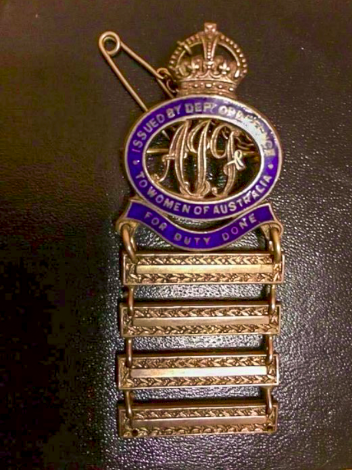
Fromelles had taken the heir to the farm and the hope of generations of farmers to continue the lives their Irish immigrant grandparents had wanted when they left Ireland for the lucky country of Australia.
Memorials for Jim
His parents chose the following inscription for their son’s headstone:
A sorrowing people cried aloud,
That they were of a hero proud.
He helped to build his country's name.
And died in bringing her to fame.
Sadly, the length of the inscription went well beyond the 66-character maximum set by the war graves authorities and this began an interchange of correspondence before James senior grudgingly agreed that “the following inscription will do”:
Though nothing can the loss replace
A dear one taken from our side.
Clearly, it was just not the same, nor could it alleviate the eternal heartache the family would endure.

For the centenary of the Battle of Fromelles, Jim’s nephew, Brian Coman, and Brian’s daughter, Louise, were honoured to be able to visit the grave of their uncle / great-uncle. During that visit in July 1916, they stood by Jim’s grave and recited the words his parents had originally chosen for their son. Louise Coman described her visit to Fromelles with her 84-year-old father as a great privilege and added:
“The first time I couldn’t breathe - to at last visit my great uncle Jim at Fromelles for Nanna! No one from her family had been able to. Could Jim ever have imagined the impact his death would have on his family for generations to come?
The tour group of thirty of us stood at Jim’s grave and I recited by heart the words his parents wanted for him.
I am a proud Australian and shall forever advocate for our 19th of July Men of Fromelles. Lest We Forget.”
Louise was close to her Nanna Coman, Jim’s youngest sister Alicia nee Gavin, her father’s mother. Family and friends called Alicia ‘Tot’ as she was only 5 feet 2. The portrait of Jim, the handsome soldier, was the first thing you would see in the hallway of her home at Sandgate. Nanna gave Louise the photo and also her mother’s Relatives Medal with four bars for her boys who gave their all for Australia.
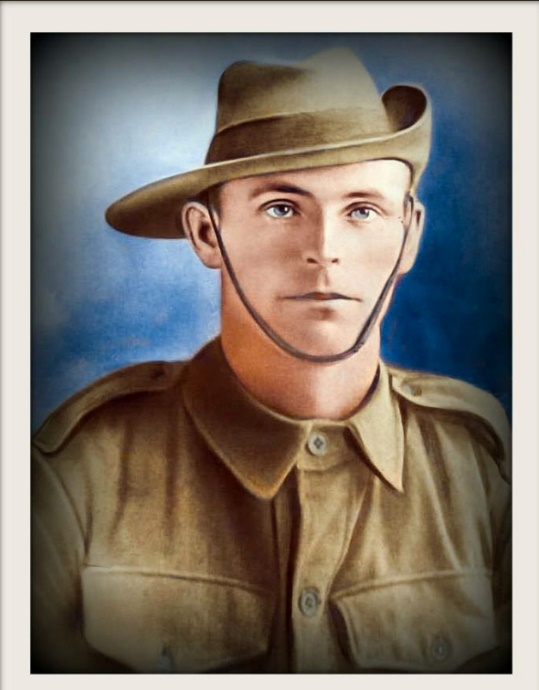
James Gavin is also commemorated at:
- The Australian War Memorial Roll of Honour, Canberra, ACT, panel 118
- Toowoomba War Memorial (Mother’s Memorial), Toowoomba, Qld
- Crow’s Nest War Memorial, Crow’s Nest, Qld
Links to Official Records
The Fromelles Association would love to hear from you

Contacts
(Contact: royce@fromelles.info or geoffrey@fromelles.info).
(Contact: army.uwc@defence.gov.au or phone 1800 019 090).
Donations
If you are able, please contribute to the upkeep of this resource.
(Contact: bill@fromelles.info ).

